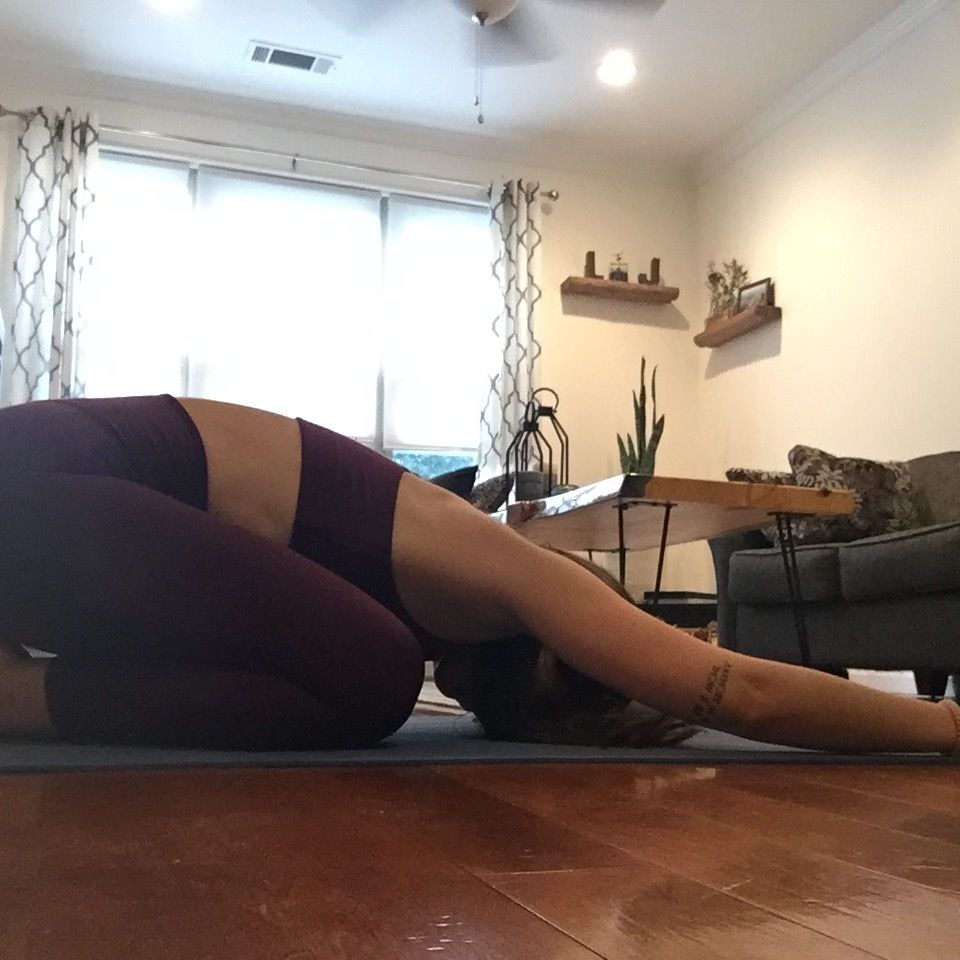About a year ago now, the high-intensity training gym I took classes and coached at in New Jersey shut its doors for what I expected would be a few weeks as the novel coronavirus pandemic started to sweep across the United States.
Up until that very last day, I walked into that gym at 5:45 a.m. just about every morning, chatting with my fellow early-birds about how sore we were from the day before while foam rolling and starting to warm up for the workout ahead.
To say I was regimented would be an understatement. I grew up swimming competitively, so training daily (and hard) seemed pretty much woven into my very identity. For years, I took a “go hard or go home” approach to moving my body. No day felt truly complete if it didn’t involve a good sweat—and though I developed a deep love for yoga in my early 20s, I never maintained a consistent practice. As much as I wanted to get on the mat, the weights and HIIT sessions overpowered yoga’s gentle call with their promises of sweat, satisfaction, and six-packs.

When the pandemic rolled around and stopped my go-go-go mentality in its tracks, I had all but deadlifted, sprinted, and burpee-d myself into the ground. In the name of the hustle culture that most certainly applies to fitness, I had fallen completely out-of-touch with my body.
How could I miss out on the camaraderie of commiserating with my gym friends during a particularly brutal circuit? Was I really going to leave my husband hanging for our gym’s weekly partner workout? Who was I without the dedication to sweat that had become such a big part of my sense of self? These questions had kept me showing up for early-morning HIIT classes when a voice deep within me just wanted to stretch.
When the pandemic took my usual routine completely off the table, though, I had no choice but to sit with the tightness in my shoulders that I typically ignored and acknowledge that my body was tired. In fact, my body had been tired for months, but I had been so convinced that I knew better than it—and so emotionally and mentally hooked on the sense of accomplishment, stress-relief, and self-worth that I’d come to rely on tough workouts for—that I ignored it.
Throughout those first few weeks and months of lockdown last Spring, as the pandemic continued to ramp up and any sense of normalcy crumbled, stressing about falling out of my workout routine became so stressful in itself that I couldn’t keep it up; not on top of worrying about the health and safety of my family and watching people argue over toilet paper at the supermarket.
Slowing Down (Like, Way Down)
Without a ton of workout equipment at home or the desire to do much beyond get through the day, like many others, I took to walking.
Sometimes three times a day, I laced up my shoes, donned a mask, and strolled or trudged (it varied) through the park near my apartment. Listening to the birds chirp and watching the flowers bloom as usual around me brought an overwhelming sense of calm, reminding me that the world still turned, resilient as could be.
My walks quickly became my way of finding peace amidst chaos—but, over time, they transformed into so much more. Not only did this gentle movement quiet my mind, but it left my body feeling refreshed and energized, instead of sore and depleted.
Again, my body was trying to tell me something. But now, unlike in the past, I was all ears. The long and short of it: My body wanted to move (perhaps needed to move)—and that movement would make me feel happier, more accomplished, and even more human, as long as I truly let my body lead the way and listen to its increasingly-clear signals about when to push, when to run, when to play, and when to rest.

For the first time since I started swimming back in middle school, I felt free of the idea that I “had” to do any sort of workout on a given day.
Redefining My Routine
As this perspective shift began to overtake the narratives and ideas about fitness I’d long bought into, magic started to spark.
When, a good six months into lockdown, my husband and I finally started accumulating some home workout gear (including a few sets of dumbbells, some resistance bands, and a sandbag), I was excited to start challenging myself. As I dropped into my very first goblet squat, I practically squealed with joy, a feeling I realized I’d totally deprived myself of by grinding so hard pre-pandemic.
From that moment on, I understood that I could treasure the sense of achievement and satisfaction that comes with lifting my heaviest weight yet or cranking out a new pushup record and also respect that my body also needs rest, recovery, and nourishment—and that the number of burpees I can do or how hard I can push myself have nothing to do with who I am as a person.
https://www.instagram.com/p/CEc2ghCn05o/
A post shared by Lauren Del Turco, CPT (@laurendelturco)
For almost a year now, I’ve gone easy on myself (both in terms of workouts and self-talk). Some weeks, I do nothing but stroll around the block; others, I hit the weights almost every day.
In untangling my workout routine from my sense of self and letting go of the ideas I once had about how I thought my body should look and perform, I finally found the healthy balance of movement that makes me feel my best.
And now, after a year of approaching exercise with flexibility and grace, I’m more grateful than ever for what my body can do, have more fun when I do choose to push myself, and have finally (I mean finally) gotten that yoga practice to stick.
Source: Read Full Article
